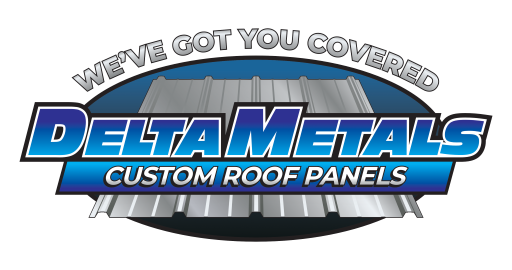Project Budget: Weighing Cost vs. Lifespan
Why We Think the Up-Front Cost Can Be Well Worth It
When budgeting for roofing and siding materials, it’s essential to look beyond upfront costs and consider the long-term financial impact. The cheapest option today may turn out to be the most expensive over time due to frequent maintenance, repairs, and replacements. Investing in durable materials ensures not only cost efficiency but also structural integrity for decades to come.
Metal Roofing & Siding: Higher Initial Cost, Lower Lifetime Expense
Metal roofing and siding stand out for their longevity and durability. While they may require a higher initial investment, their long lifespan and minimal maintenance make them one of the most cost-effective choices in the long run.
- Corrugated Steel Panels: $4 – $6.50 per sq. ft.
- Standing Seam Metal: $9 – $30 per sq. ft.
- Copper Roofing: $20 – $40 per sq. ft.
- Lifespan: 50 – 100 years
- Maintenance: Low—resistant to rot, fire, and pests
Though the upfront costs for metal are higher, its 50+ year lifespan ensures that homeowners and builders avoid the cycle of frequent replacements and repairs. Additionally, metal’s ability to withstand extreme weather conditions means lower maintenance costs over time.
Alternative Materials: Lower Initial Cost, Higher Lifetime Expense
At first glance, traditional materials such as asphalt shingles and wood siding appear to be more affordable, but their shorter lifespan and maintenance needs lead to higher cumulative costs.
- Asphalt Shingles: $3 – $7 per sq. ft. | Lifespan: 15 – 30 years
- Wood Siding: $6 – $12 per sq. ft. | Lifespan: 20 – 40 years (requires frequent upkeep)
- Vinyl Siding: $3 – $8 per sq. ft. | Lifespan: 20 – 40 years (susceptible to weather damage)
- Fiber Cement Siding: $5 – $14 per sq. ft. | Lifespan: 30 – 50 years (requires repainting)
While asphalt shingles may cost less initially, a home may require two to three replacements over the course of 50 years, making it more expensive in the long run. Similarly, wood siding demands frequent repainting, sealing, and protection against pests, adding to maintenance costs.
The Cost-Benefit Conclusion
When comparing materials, it’s not just about what you pay today—it’s about what you save tomorrow. While metal roofing and siding require a higher initial investment, their longevity, durability, and low maintenance needs result in significant long-term savings. Alternative materials may be cheaper upfront, but their shorter lifespan and higher upkeep lead to greater expenses over time.
For those looking for a balance between upfront affordability and lifetime value, metal remains the superior choice, delivering durability, sustainability, and cost efficiency over decades.
